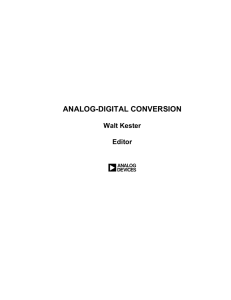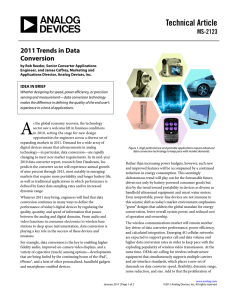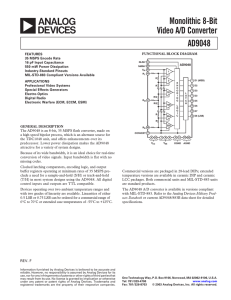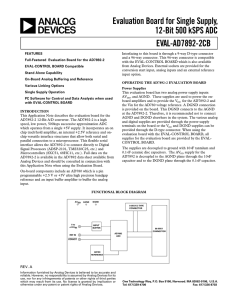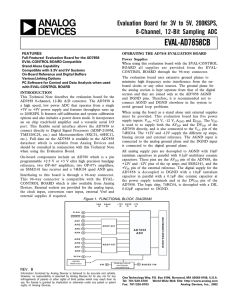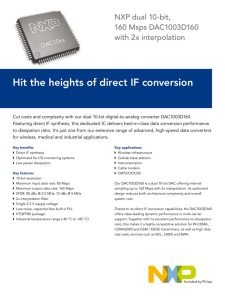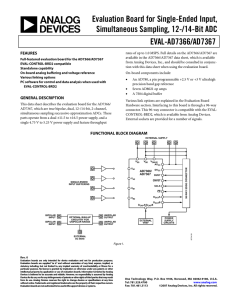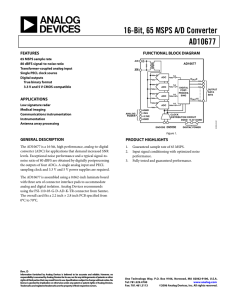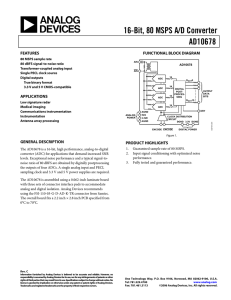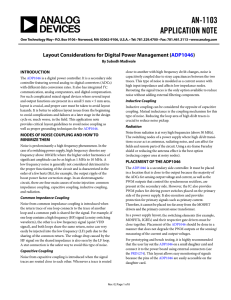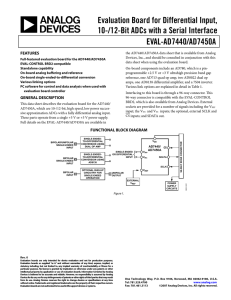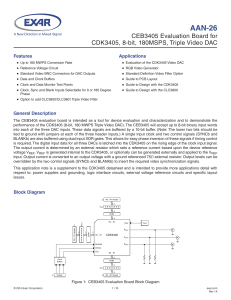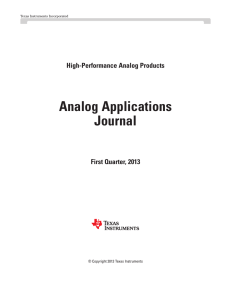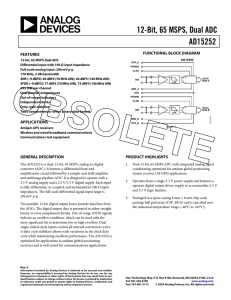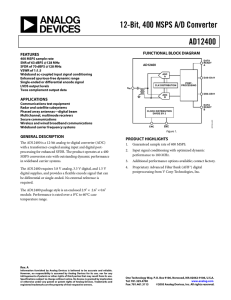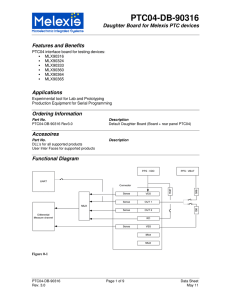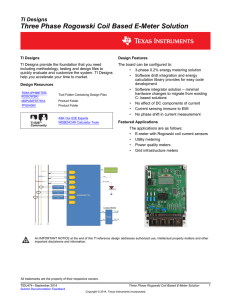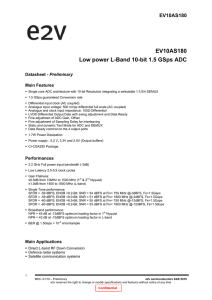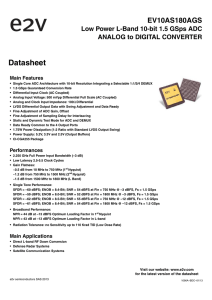Rarely Asked Questions R A Q ’ s
advertisement
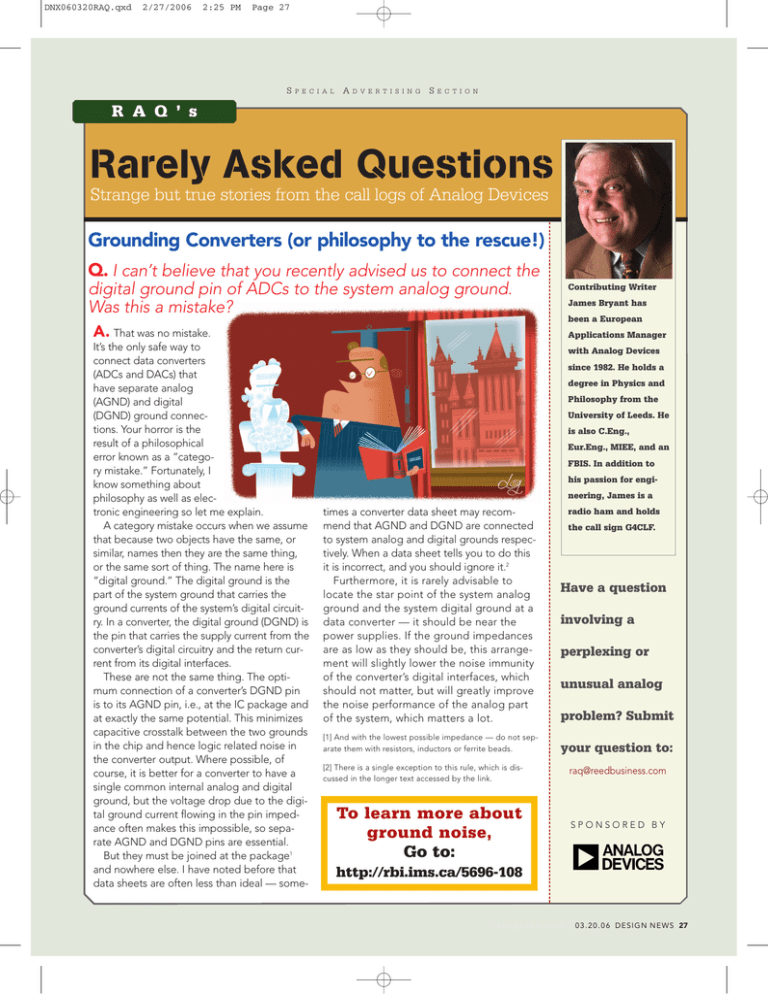
DNX060320RAQ.qxd 2/27/2006 2:25 PM Page 27 S P E C I A L A D V E R T I S I N G S E C T I O N R A Q ’ s Rarely Asked Questions Strange but true stories from the call logs of Analog Devices Grounding Converters (or philosophy to the rescue!) Q. I can’t believe that you recently advised us to connect the digital ground pin of ADCs to the system analog ground. Was this a mistake? A. That was no mistake. It’s the only safe way to connect data converters (ADCs and DACs) that have separate analog (AGND) and digital (DGND) ground connections. Your horror is the result of a philosophical error known as a “category mistake.” Fortunately, I know something about philosophy as well as electronic engineering so let me explain. A category mistake occurs when we assume that because two objects have the same, or similar, names then they are the same thing, or the same sort of thing. The name here is “digital ground.” The digital ground is the part of the system ground that carries the ground currents of the system’s digital circuitry. In a converter, the digital ground (DGND) is the pin that carries the supply current from the converter’s digital circuitry and the return current from its digital interfaces. These are not the same thing. The optimum connection of a converter’s DGND pin is to its AGND pin, i.e., at the IC package and at exactly the same potential. This minimizes capacitive crosstalk between the two grounds in the chip and hence logic related noise in the converter output. Where possible, of course, it is better for a converter to have a single common internal analog and digital ground, but the voltage drop due to the digital ground current flowing in the pin impedance often makes this impossible, so separate AGND and DGND pins are essential. But they must be joined at the package1 and nowhere else. I have noted before that data sheets are often less than ideal — some- Contributing Writer James Bryant has been a European Applications Manager with Analog Devices since 1982. He holds a degree in Physics and Philosophy from the University of Leeds. He is also C.Eng., Eur.Eng., MIEE, and an FBIS. In addition to his passion for engineering, James is a times a converter data sheet may recommend that AGND and DGND are connected to system analog and digital grounds respectively. When a data sheet tells you to do this it is incorrect, and you should ignore it.2 Furthermore, it is rarely advisable to locate the star point of the system analog ground and the system digital ground at a data converter — it should be near the power supplies. If the ground impedances are as low as they should be, this arrangement will slightly lower the noise immunity of the converter’s digital interfaces, which should not matter, but will greatly improve the noise performance of the analog part of the system, which matters a lot. [1] And with the lowest possible impedance — do not separate them with resistors, inductors or ferrite beads. [2] There is a single exception to this rule, which is discussed in the longer text accessed by the link. To learn more about ground noise, Go to: radio ham and holds the call sign G4CLF. Have a question involving a perplexing or unusual analog problem? Submit your question to: raq@reedbusiness.com SPONSORED BY http://rbi.ims.ca/5696-108 [ d e s i g n n e w s . c o m ] 0 3 . 2 0 . 0 6 D E S I G N N E W S 27
